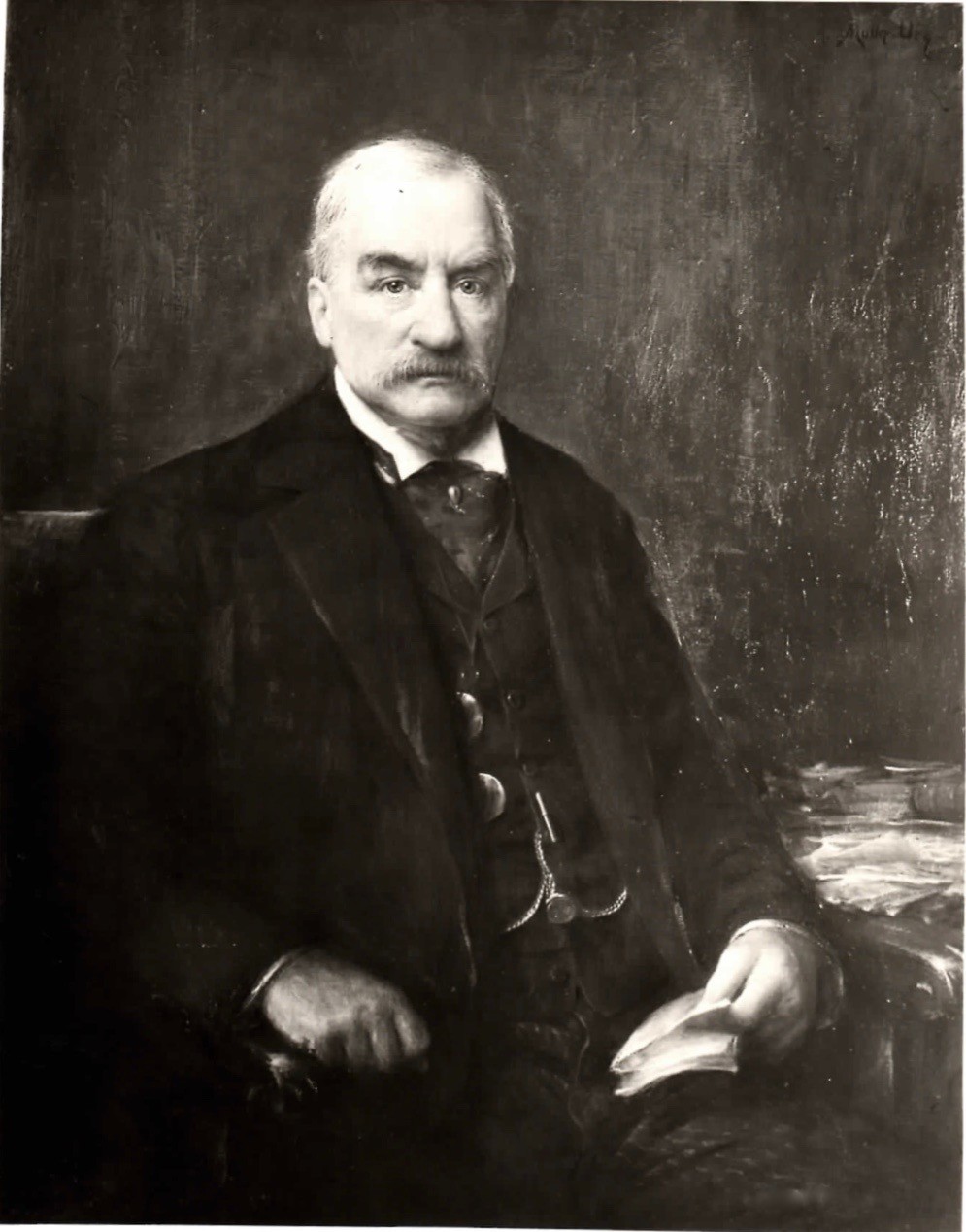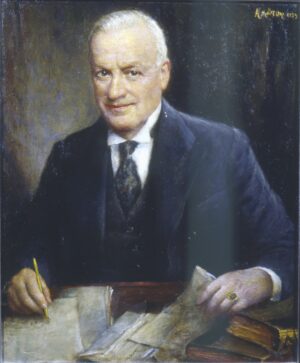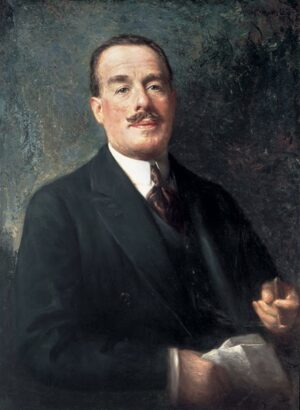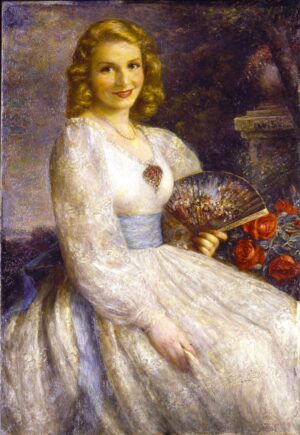MORGAN, John Pierpont (1904) (Version 1/2)
Description:
A virtual replica of the first three quarter length seated from 1904.
Location:
Present Whereabouts Unknown.
Exhibition:
M. KNOEDLER & CO., 355, Fifth Avenue, New York, November 23 – December 3, 1904.
Bibliography:
Town & Country, New York, July 30, 1904
New York Press, Sunday morning, November 27, 1904
Town Topics, December 1, 1904
Brooklyn Life, December 3, 1904
Town & Country, New York, May 27, 1905
John Pierpont Morgan was born in Hartford Connecticut on April 17, 1837, and educated in Europe and the University of Gottingen where he was considered a mathematical genius. In his early twenties he acted as American representative of his father’s London banking firm, and during the years of the American Civil War and afterwards in the development of American industry and railroads played a major role as a banker and organizer, with his credit considered safer than that of the United States government. One of the foremost collectors of the nineteenth and early twentieth centuries, he acquired major works of art wherever in the world he was travelling, most of which are today in American museums. He died in Rome on March 13, 1913.
In the Times Picayune, New Orleans, Tuesday, October 6, 1942, Muller-Ury told a reporter the following: ‘Morgan never missed a sitting. When I commented on this, he said, “And why should I break an appointment? I have no patience with people who do!”’
Select Bibliography:
Frederick Lewis Allen, The Great Pierpont Morgan, New York, 1948
Cass Canfield, The Incredible Pierpont Morgan: Financier & Art Collector, London, 1974.
Louis Auchincloss, J. P. Morgan: The Financier as Collector, New York, 1990
Jean Strouse, Morgan: American Financier, New York 1999.
—
Town & Country, New York, July 30, 1904 reported that ‘Mr. and Mrs. Herbert Satterlee made a visit last week to Mr. A. Muller-Ury’s studio to see second portrait of Mr. J. Pierpont Morgan, which will be a gift to his son, who resides in England.’ According to Town Topics (December 1, 1904) the portrait of Morgan exhibited at Knoedler’s, was the second portrait Muller-Ury painted of him. This must have been a replica of the portrait above, for Brooklyn Life (December 3, 1904) confirms that a replica was painted by Muller-Ury at the request of Morgan’s daughters to be presented to their brother Mr. J. Pierpont Morgan, Jr. At the same exhibition the oval portrait of Morgan’s grand-daughter Mabel Satterlee was also exhibited.
A letter stuck in the artist’s papers from Herbert Satterlee, dated July 11, 1904, to the artist – who was painting Judge Parker at Esopus New York – is worth quoting in full:
‘Dear Mr. Ury:
When I went up to Highland Falls on Saturday evening, I received your letter of the 7th inst. As you know, Mr. Morgan arrived on the 8th. He is in very good health and spirits. I had an opportunity of talking to him about the portrait yesterday afternoon. He says that he will sit for you any morning (except Saturday or Sunday) in New York. He will be in and around New York during the present week and the week following. I do not know about his plans after that. When you come to town, if you will call him up on the telephone at his office, or visit him there, you can doubtless make an appointment for the day following or for the day after that. He will be living on his yacht at anchor in the North River, and can probably arrange to come to you between ten and eleven in the morning.
I did not communicate with you by telephone as you suggested, because I presume that both Judge Parker’s and Mr. Sheehan’s telephones are pretty busy to-day, and beside, as you know, Mr. Morgan does not want any publicity about his portrait at present. He complimented your portrait of Mabel.
When you come to New York to work on Mr. Morgan’s picture, I hope you will know. I sometimes spend the night in town, and will be glad to have you dine with me, and of course I will want to see the picture.
Very sincerely yours, Herbert L. Satterlee.’
The New York Press in commenting on the artist’s exhibition at Knoedler’s in November in which one Morgan portrait was displayed said unfavourably: ‘It may be that Mr. Morgan was a victim of his friends in having to sit for this portrait. That would seem to be the only possible excuse the president of the Metropolitan Museum of Art might have for encouraging such colorless work as the canvas shown here.’





